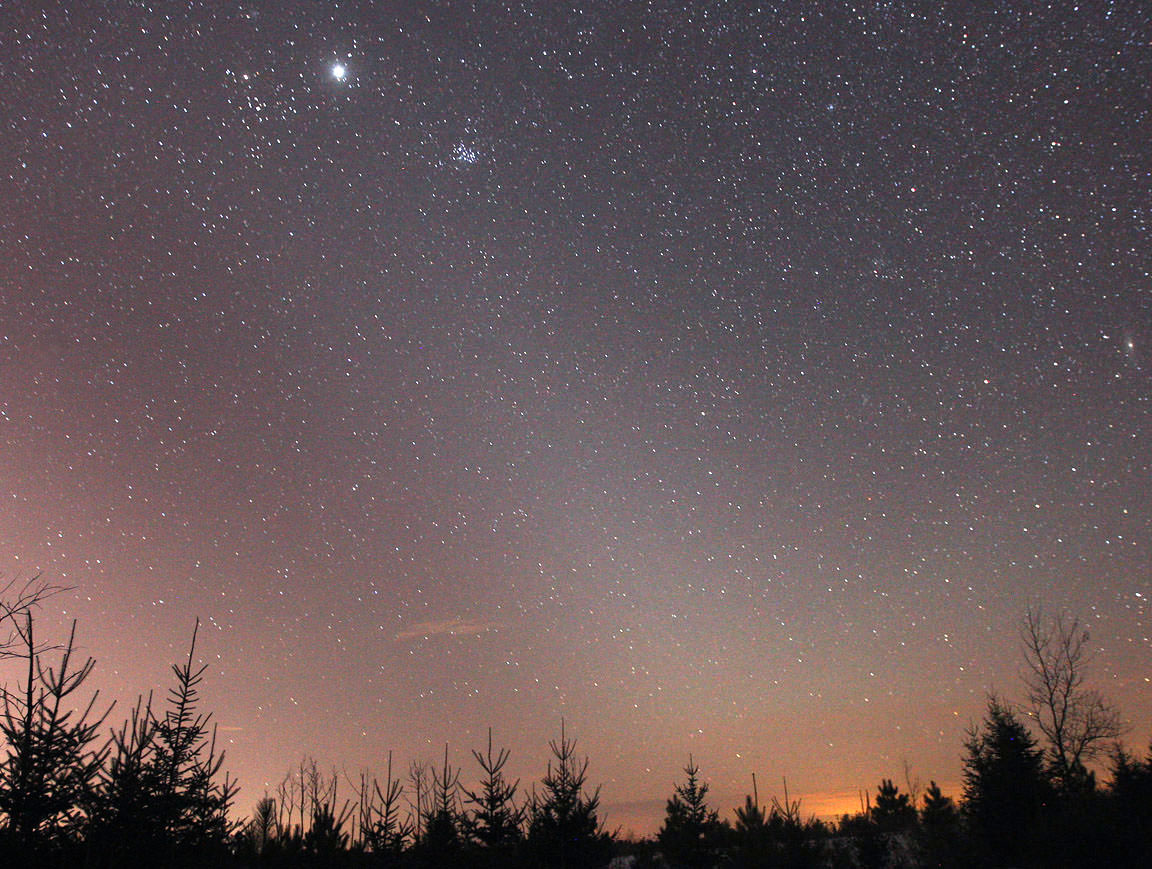In this series we are exploring the weird and wonderful world of astronomy jargon! You’ll see a glimmer of light with today’s topic: Zodiacal Light!
You can best see the Zodiacal light in the evening hours just after sunset or the morning hours just before sunrise. If you find yourself in a dark enough place, you’ll be treated to a faint glow extending upwards from the horizon. The glow will be brightest and widest at the horizon, and it will extend in a triangular shape until it ultimately peters out.
This is the Zodiacal light, and you’re seeing sunlight reflected off of countless tiny grains of dust. The reason that the Zodiacal light has that shape is that the dust is thickest in the plane of our solar system. The line of the Zodiac marks the plane of our solar system in the sky (it’s the line that all the planets and the Sun pass through), hence the name. If you look away from the Zodiac, there isn’t enough dust in that direction to cause a noticeable glow.
The individual grains of dust are no bigger than 300 micrometers in diameter, and weigh no more than ten or so micrograms, although most are much smaller.
The dust comes from comets. Some comets swing too close to the planet Jupiter. When they do, the immense gravity of that massive planet can sometimes break off pieces of the comet. At first those bits have all sorts of orbits, but eventually uneven heating from the Sun causes them to settle down and form a loose collection that stays within the solar system. The dust grains are too large to be blown away by radiation pressure or the solar wind.
Larger bits of debris, called micrometeorites, have much more active lives and can be pushed out of the solar system altogether. Sometimes, however, the micrometeorites themselves fall apart and create dust grains of their own.

